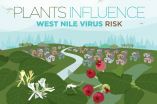(Press-News.org) Among obese participants with type 2 diabetes mellitus, bariatric surgery with 2 years of a low-level lifestyle intervention resulted in more disease remission than did lifestyle intervention alone, according to a study published online by JAMA Surgery.
It remains to be established whether bariatric surgery is a durable and effective treatment for type 2 diabetes (T2DM) and how bariatric surgery compares with intensive lifestyle modification and medication management with respect to T2DM-related outcomes. As demonstrated in observational studies and several small randomized clinical trials of short duration, T2DM is greatly improved after bariatric surgery. However, more information is needed about the longer-term effectiveness and risks of all types of bariatric surgical procedures compared with lifestyle and medical management for those with T2DM and obesity, according to background information in the article.
Anita P. Courcoulas, M.D., M.P.H., of the University of Pittsburgh Medical Center, Pittsburgh, and colleagues assessed outcomes 3 years after 61 obese participants with T2DM who were randomly assigned to either an intensive lifestyle weight loss intervention for 1 year followed by a low-level lifestyle intervention for 2 years or surgical treatments (Roux-en-Y gastric bypass [RYGB] or laparoscopic adjustable gastric banding [LAGB]) followed by low-level lifestyle intervention in years 2 and 3. Fifty participants (82 percent) were women, and 13 (21 percent) were African American.
At 3 years, any T2DM remission (partial or complete) was achieved in 40 percent (n = 8) of RYGB, 29 percent (n = 6) of LAGB, and no intensive lifestyle weight loss intervention participants, while complete remission was achieved in 15 percent of RYGB, 5 percent of LAGB, and no intensive lifestyle weight loss intervention group participants.
The use of diabetes medications was reduced more in the surgical groups than the lifestyle intervention-alone group, with 65 percent of RYGB, 33 percent of LAGB, and none of the intensive lifestyle weight loss intervention participants going from using insulin or oral medication at baseline to no medication at year 3. Average reductions in percentage of body weight at 3 years were the greatest after RYGB at 25 percent (2 percent), followed by LAGB at 15 percent (2 percent) and lifestyle treatment at 5.7 percent (2.4 percent).
The authors note that one important aspect of this study was that more than 40 percent of the sample were individuals with class I obesity (BMI of 30 to END
Longer-term follow-up shows greater type 2 diabetes remission for bariatric surgery compared to life
2015-07-01
ELSE PRESS RELEASES FROM THIS DATE:
Research letter: Indoor tanning rates drop among US adults
2015-07-01
Indoor tanning rates dropped among adults from 5.5 percent in 2010 to 4.2 percent in 2013, although an estimated 7.8 million women and 1.9 million men still engage in the practice, which has been linked to increased cancer risk, according to the results of a study published online in a research letter by JAMA Dermatology.
Gery P. Guy Jr., Ph.D., M.P.H., of the Centers for Disease Control and Prevention, Atlanta, and coauthors analyzed data for 59,145 individuals from the 2010 and 2013 National Health Interview Survey, a nationally representative sample of U.S. adults.
In ...
Trends in antipsychotic medication use in children, adolescents, and young adults
2015-07-01
New York, NY (July 1, 2015) -- Despite concerns that use of antipsychotic medications in treating young people has increased, use actually declined between 2006 and 2010 for children ages 12 and under, and increased for adolescents and young adults.
In a study published today in JAMA Psychiatry, Mark Olfson, MD, MPH, of Columbia University Medical Center (CUMC) and NYS Psychiatric Institute, and his colleagues analyzed prescription data from 2006-2010 to identify trends in the use of antipsychotic medications in young people in the United States.
They found that boys ...
Boys more likely to have antipsychotics prescribed, regardless of age
2015-07-01
Boys are more likely than girls to receive a prescription for antipsychotic medication regardless of age, researchers have found. Approximately 1.5 percent of boys ages 10-18 received an antipsychotic prescription in 2010, although the percentage falls by nearly half after age 19. Among antipsychotic users with mental disorder diagnoses, attention deficit hyperactivity disorder (ADHD) was the most common among youth ages 1-18, while depression was the most common diagnosis among young adults ages 19-24 receiving antipsychotics.
Despite concerns over the rising use of ...
What makes fireflies glow? (video)
2015-07-01
As fireflies are delighting children across the country with their nighttime displays, scientists are closing in on a better understanding of how the insects produce their enchanting glow. They report in the Journal of the American Chemical Society new evidence of how the beetles' chemistry works. Their findings could apply to the bioluminescence of other organisms, too.
About 60 years ago, scientists figured out in broad strokes the cascade of reactions that allows fireflies to produce light. It starts with a chemical called luciferin, which interacts with the energy-transporting ...
What's in your landscape? Plants can alter West Nile virus risk
2015-07-01
CHAMPAIGN, Ill. -- A new study looks at how leaf litter in water influences the abundance of Culex pipiens mosquitoes, which can transmit West Nile virus to humans, domestic animals, birds and other wildlife.
The study found that different species of leaf litter in standing water influence where Culex pipiens mosquitoes deposit their eggs, how quickly the larvae grow, how big they get and whether they survive to adulthood. Because the mosquitoes feed on bacteria that grow on leaf litter, the team also measured how native and non-native leaf species influenced bacterial ...
Implantable 'artificial pancreas' could help diabetes patients control their blood sugar
2015-07-01
Living with Type 1 diabetes requires constant monitoring of blood sugar levels and injecting insulin daily. Now scientists are reporting in the ACS journal Industrial & Engineering Chemistry Research the development of an implantable "artificial pancreas" that continuously measures a person's blood sugar, or glucose, level and can automatically release insulin as needed.
Type 1 diabetes, previously known as juvenile diabetes, affects about 1.25 million Americans. About 200,000 of them are under 20 years old. The condition arises when a person's own immune system destroys ...
Helping students stick with MOOCs
2015-07-01
MOOCs -- massive open online courses -- grant huge numbers of people access to world-class educational resources, but they also suffer high rates of attrition.
To some degree, that's inevitable: Many people who enroll in MOOCs may have no interest in doing homework, but simply plan to listen to video lectures in their spare time.
Others, however, may begin courses with the firm intention of completing them but get derailed by life's other demands. Identifying those people before they drop out and providing them with extra help could make their MOOC participation much ...
Producing fuel from Canada oil sands emits more carbon than from US crude
2015-07-01
The production of petroleum from Canada's oil sands is on the rise with much of it destined for U.S. refineries. As the U.S. takes stock of its greenhouse gas emissions, scientists report in the ACS journal Environmental Science & Technology that the current oil sands production of fuels from "well-to-wheels" releases about 20 percent more carbon dioxide into the atmosphere than making gasoline and diesel from conventional crudes.
In 2013, the oil industry was producing nearly 2 million barrels per day from Canadian oil sands. By 2030, that number is expected to rise ...
Ultra-stable JILA microscopy technique tracks tiny objects for hours
2015-07-01
JILA researchers have designed a microscope instrument so stable that it can accurately measure the 3D movement of individual molecules over many hours--hundreds of times longer than the current limit measured in seconds.*
The technology was designed to track the machinery of biological cells, down to the tiniest bits of DNA, a single "base pair" of nucleotides among the 3 billion of these chemical units in human genes. But the instrument could be useful well beyond biology, biochemistry and biophysics, perhaps in manufacturing.
JILA is a partnership of the National ...
New drug for neuroblastoma shows promise in phase I study
2015-07-01
GRAND RAPIDS, Mich., June 24, 2015 - Researchers at Spectrum Health Helen DeVos Children's Hospital have completed the first clinical trial of a new treatment for children suffering from neuroblastoma. In a clinical trial led by Giselle Sholler, MD, pediatric oncologist at Helen DeVos Children's Hospital and the Neuroblastoma and Medulloblastoma Translational Research Consortium (NMTRC), DFMO, an investigational agent, showed minimal side effects with long-term survival of three patients. This is the first clinical study of an oral dosing form of DFMO in any pediatric population. ...

